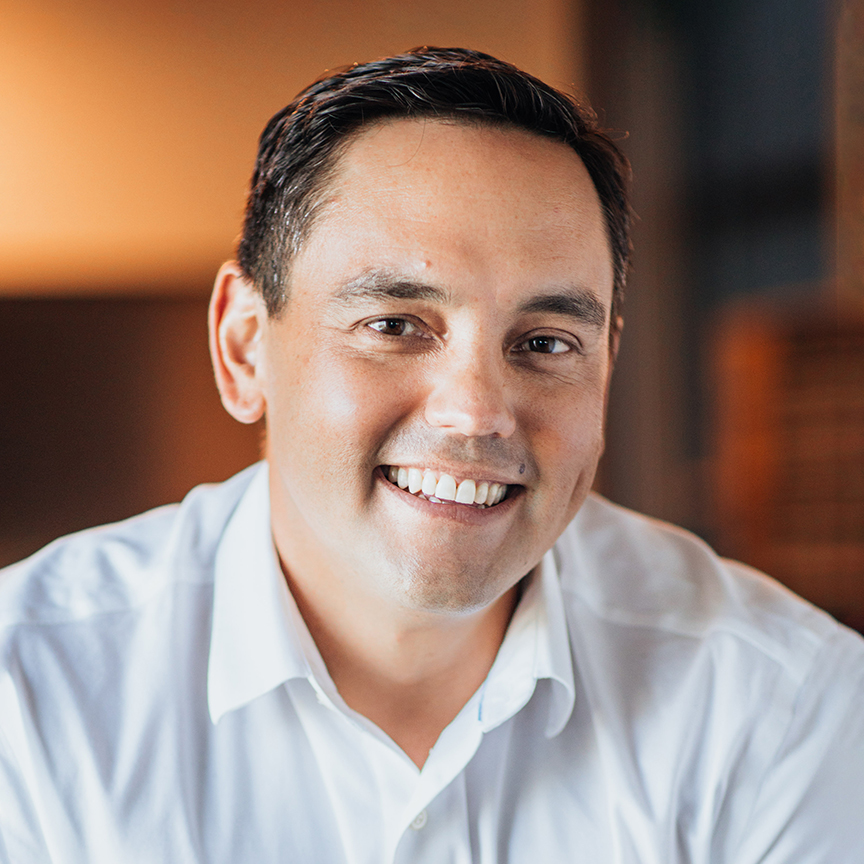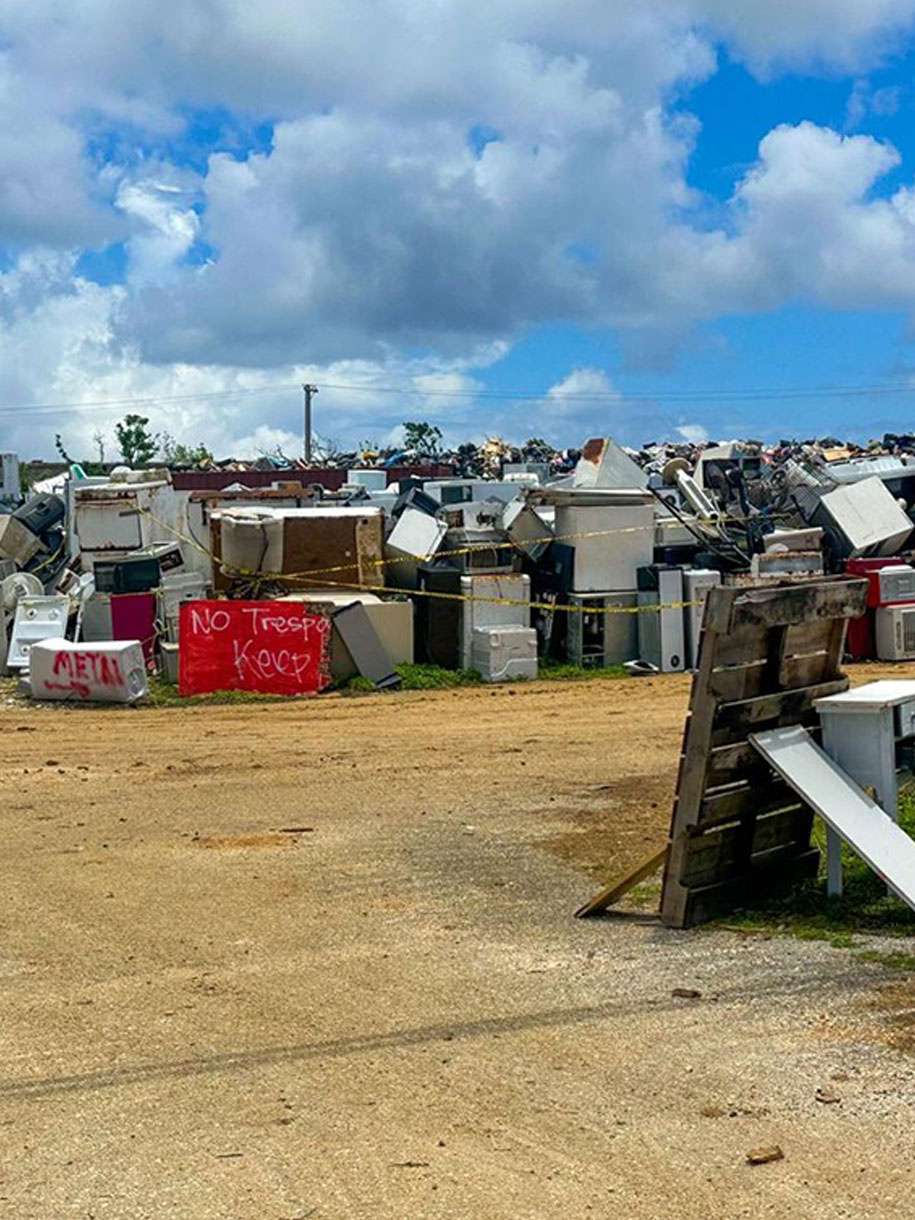By Joaquin P.L.G. Cook, president and CEO of Bank of Guam

Hafa Adai readers near and far ...
It has been a little over six months since our last Top Companies article and we are back again with an update. Not much has changed overall but there have been some occasional bright spots, as well as some red flags we need to be aware of.
Throughout our region, the military construction activity continues to bolster the economy, with no signs of slowing down soon.
Tourism continues to struggle as we explore new ways to market our tropical paradise to compete with the giants of southeast Asia.
Guam
Guam's economy in 2025 can be characterized as allowing us cautious optimism, driven by the continuing recovery efforts of our tourism sector and sustained military spending.
Guam's economic landscape is heavily influenced by external factors, including global travel trends, foreign exchange markets and defense policies. While the U.S. military spend has been propping the economy up since the pandemic, the island's efforts to revive tourism and resurrect our primary revenue generator is crucial for its economic stability and growth.
So 2025 to 2024 has seen a gradual recovery in tourism, with increased arrivals from key markets such as Japan and South Korea. The addition of two daily flights by Korean Air starting in June and additional flights by Jeju Air should have a positive impact and significantly boost arrivals to Guam.
Under new leadership and with a more laser focused approach on righting the ship, the Guam Visitors Bureau has implemented strategic marketing campaigns and infrastructure improvements to attract tourists, emphasizing the island's unique cultural heritage and natural beauty. Hotels, restaurants, and retail businesses are experiencing slight increases in foot traffic, signaling a positive trend for the local economy. However, there is a pressing need to deploy new and aggressive marketing campaigns to drive demand and ensure these flights are consistently full. Local product improvement is high on the priority list, showcasing Guam's evolution as a tourism destination.
Military spending continues to play a pivotal role in Guam's economic landscape. The U.S. military presence on the island supports various sectors, including construction, housing, and healthcare. Military activities generate numerous job opportunities for locals and contribute to the development of infrastructure. Engaging with military contracts provides a stable revenue stream for businesses, while residents benefit from improved facilities funded by military investments. In addition to military spending on bases because of relocation and other construction projects, we have seen an increase in port visits by naval fleets, as well as an uptick in joint exercises for the region. These have both helped increase economic activity on the island with many of our restaurants, bars, retail establishments and other small businesses.
Government of Guam tax collections remain healthy due to the high level of activity by military contractors.
Deposits with financial institutions continue to trend upwards due to federal spending, reflecting increased economic activity and slightly elevated confidence. The recent increase in the federal daily rate for hotels from $159 to $179 has also provided added revenue for hotels that benefit from contractors and military guests. Now more than ever, the symbiotic relationship between the military and the local economy is essential for Guam's financial health.
The outlook for business on Guam is, for now, flat at best but the second half of 2025 should bring some positive increases in arrivals, resulting in heightened economic activity.
The new flights from Korea will help greatly but we must do all we can to ensure that these flights are full for risk of the airlines pulling back. Should that happen and several of the flights are taken off schedule, it will put us miles behind where we want to be and further from a position from which we need to be in to resurrect our tourism industry.
Despite these positive developments, Guam continues to face challenges in diversifying its economy. The government is actively promoting initiatives in agriculture, aquaculture, and renewable energy to reduce reliance on imports and create sustainable industries. However, limited land resources and the need for skilled labor pose significant obstacles. Conversations with local employers reveal that labor availability is a major challenge, as many residents are reluctant to work, are not seeking work, or lack training.
Investment in education and training programs is crucial to equip the workforce for emerging industries and to foster innovation. Federal vacancies to date have created a black hole; many of our talented people have been sucked into that. Even with the efforts of DOGE to cut the fat out of the federal payroll, there have not been any major reductions in the labor force to date. While there have been rumors that some sort of cuts will be coming, they are just rumors. That said, a reduction of federal employees may not be all bad, as it would mean an increase in talented and productive employees from which local, private companies could hire.
Additionally, there is considerable uncertainty regarding the impact of Trump's tariff policies on the cost of living for island residents. Although Guam is outside the U.S. Customs system and tariffs do not directly apply to imports to Guam, indirect effects may still arise from increased costs of goods shipped through U.S. suppliers. As Guam navigates these challenges, the combined efforts in tourism recovery and military spending will remain vital for its economic resilience and growth.
Northern Mariana Islands
The economy of the Northern Mariana Islands continues to struggle but there have been some bright spots to date.
Key events such as the auction of the Imperial Pacific International casino, the franchise agreement for the Sheraton Saipan, and increased military activity in Tinian have all provided some rays of hope for our brothers and sisters to the north.
While it’s still uncertain what will happen, the auction of the IPI casino assets marks a significant shift in the NMI's gaming industry. The casino, which faced numerous financial and operational challenges, was auctioned off to Team King Investment for $12.95 million. This sale could bring new management and potentially revive the casino's operations, contributing to the local economy through job creation and tourism.
In the hospitality sector, the former Hyatt Regency Saipan is slated to be rebranded as a Sheraton hotel. This transition is a positive development for the NMI's tourism industry, which has been struggling in recent years. The Sheraton brand is expected to attract more visitors and provide a boost to the local economy. The hotel has yet to rebrand pending upgrades and renovations per corporate standards. Upon reopening, renewed optimism and employment opportunities will be added to the island.
Tinian is playing a central role in the NMI's economic and strategic landscape with significant military expansion projects. The rehabilitation of North Field, Tinian's historic airfield, is a major undertaking that includes upgrading runways and infrastructure to support both military exercises and emergency commercial use. This project is generating economic activity, creating higher-paying jobs in construction and logistics, and increasing tax revenue. The presence of rotating military personnel also benefits local businesses such as hotels and restaurants.
The temporary closure of the Kensington Hotel Saipan and the reduction in staff at the Pacific Islands Club Saipan are significant setbacks for the local economy. The Kensington Hotel is closing from June 9 to July 6 for facility inspections and environmental improvements, which will result in a temporary loss of revenue and employment. Similarly, PIC Saipan is eliminating 100 positions due to financial difficulties stemming from slow tourism figures. These closures and layoffs will reduce consumer spending and negatively impact local businesses that rely on tourism.
The reduction in flights from South Korea further compounds these challenges. South Korea is a key market for Saipan's tourism industry, and fewer flights mean fewer visitors, which directly affects hotel occupancy rates, restaurant patronage, and overall tourist spending. This reduction is particularly concerning during the off-season, when maintaining visitor numbers is already challenging. The combined effect of hotel closures and reduced flights could lead to a significant downturn in the tourism sector, which is a critical component of Saipan's economy.
To mitigate these impacts, local authorities and businesses will need to implement aggressive marketing strategies to attract tourists from other markets and encourage longer stays. Enhancing local attractions and improving service quality can also help make Saipan a more competitive destination. Additionally, efforts to diversify the economy by promoting other sectors such as agriculture and renewable energy could provide more stability and reduce reliance on tourism.
There have also been efforts to increase port visits by Navy ships but there are limitations to how many and how large a vessel can dock at the pier in Saipan.
Overall, the economic outlook for Saipan will depend on how effectively these challenges are managed and how quickly the tourism sector can recover. The community's resilience and adaptability will be crucial in navigating this period of uncertainty and ensuring long-term economic stability.
Recent developments that may positively affect the NMI government’s position are the hiring of a lobbyist in Washington, D.C. and the recent naming of President Trump’s representative for the Covenant’s section 902 talks.
The Freely Associated States
Starting in fiscal 2024, the recently negotiated Compact of Free Association agreements have come into play.
While each of our three sister nations in Micronesia — Palau, the Federated States of Micronesia and the Marshall Islands — have unique terms set forth, the overarching theme of financial support, social services support and other assistance from the United States is true to all. These agreements will provide much-needed capital injections and annual operating capital to help fund infrastructure projects and overall quality of life in the region.
The agreements ensure continued support and development for the FSM, the Marshalls and Palau, strengthening their economic and social ties with the United States. In addition to the COFA funds that provide huge support for these islands, each island is also working to develop its own independent industries such as tourism, fisheries, canning, etc.
Palau
Palau's tourism sector is experiencing a significant upswing in 2025, marked by several positive developments. One of the key highlights is the increase in flights from Qantas, which now operates a weekly direct flight from Brisbane to Koror. This enhanced connectivity is expected to boost tourist arrivals, making it easier for travelers from Australia and other regions to visit Palau. The flight has been successful and there are talks by Qantas to add a second weekly flight.
Additionally, United’s direct flights from Narita to Koror are slated to start this October, further improving access for Japanese tourists.
These increased flight options are crucial for Palau's tourism recovery, as they facilitate greater visitor numbers and convenience.
The hospitality sector in Palau is also showing signs of growth and confidence. New hotel brands such as Hotel Indigo and the Four Seasons are making sizable investments in Palau, signaling strong investor confidence in the island's tourism potential. The 187-room Hotel Indigo Palau is set to open very soon, while the Four Seasons is expected to bring its luxury offerings to the island in the not-too-distant future. These new developments are anticipated to attract high-end tourists and provide a significant boost to the local economy through job creation and increased spending.
Another major development is the land deal on Peleliu to reconstruct a World War II runway to be used as a divert runway for U.S. armed forces. This project is expected to bring a large capital injection into the island, benefiting local families and generating substantial economic activity. The reconstruction of the runway not only honors the historical significance of the site but also enhances Palau's strategic infrastructure. The project will involve significant construction work, providing employment opportunities and stimulating the local economy. Similar to the construction in Tinian, the scale of this project will have a huge impact on the small island. Increased money from construction workers and other contractors will result in the need for new retail establishments, restaurants, entertainment options, etc. The community and landscape of Peleliu will be forever changed.
Overall, these developments indicate that Palau's economy is on a rebound. The combination of increased flight connectivity, new hotel investments, and large-scale infrastructure projects are driving economic growth and boosting confidence in the tourism sector. As Palau continues to enhance its tourism offerings and infrastructure, it is well-positioned to attract more visitors and achieve sustainable economic development.
The Federated States of Micronesia
The conclusion of COFA negotiations in 2024 was a highlight for the country. Based on the agreement, the U.S. will provide the FSM with sector grants totaling around $140 million annually for 20 years. These funds will provide needed support for education, healthcare, infrastructure, and other critical sectors. Plus, the U.S. will contribute $500 million to the FSM's Compact Trust Fund through two $250 million contributions in fiscal 2024 and fiscal 2025 in order to ensure long-term financial stability.
In addition to the extension and increase in funds, the mechanism through with decisions are made has been modified. What was a skewed process, in favor of the US, is now a more balanced process to decide how funds are to be spent.
Yap State is undergoing several infrastructure improvements, including the extension of the runway at Yap International Airport. The U.S. Air Force plans to invest $400 million to upgrade the airfield, which will enhance its capacity to accommodate larger aircraft for military operations, training, and humanitarian missions. This project is part of a broader effort to modernize facilities and support local communities.
The FSM's recognition of the One-China policy has led to more Chinese investment and influence in the region. China has been courting the FSM's political elite with gifts, infrastructure projects, and financial aid. While this has brought economic benefits, it has also raised concerns about the potential for political instability and the balance of power between the U.S. and China in the Pacific. The increased attention from both superpowers has prompted the U.S. to renew its commitment to the FSM, adding a military dimension to its support.
Overall, the FSM's economic condition is shaped by its strategic geopolitical position and the ongoing negotiations with the U.S. and China. The upcoming runway construction in Yap and the recognition of the One-China policy are significant factors influencing its economic stability and development.
The Marshall Islands
Per their COFA agreement, the Marshalls will receive sector grants similar to the FSM, focusing on healthcare, education, and infrastructure tailored to the RMI's specific needs. The U.S. will also contribute to RMI's Compact Trust Fund to ensure long-term financial stability. RMI citizens will continue to have access to U.S. federal programs, including disaster response and postal services. RMI citizens will have access to U.S. education benefits, veterans' benefits, and certain social benefits for RMI migrants in the U.S.
The Kwajalein Atoll Development Authority receives separate funding under the Compact of Free Association agreement with the United States. This funding is aimed at compensating for the lease of Kwajalein Atoll and addressing the impacts of nuclear testing. The payments are intended to support infrastructure development, public services, and community welfare in the Kwajalein Atoll. KADA funds are utilized for various development projects, including housing, electric power generation, water supply systems, and educational facilities. The aim is to improve the quality of life for residents of Kwajalein Atoll and other affected communities.
In all the island nations discussed above, there will be a tremendous influx of capital via COFA agreements, military spending and growing tourism industries.
Much of these funds are earmarked for infrastructure improvements for the community, to include affordable housing, roads, climate mitigation, etc. The biggest challenge for these islands is the capacity to start new projects. There are limited contractors in the area with the ability to complete large-scale projects. Barring this hurdle, the economies of the islands would be busy, vibrant and thriving.
In conclusion, there is a lot to look forward to in the coming years. The military construction spend does not appear to be slowing down and projects are seemingly added annually.
If we could all get our tourism engines firing on all cylinders, then our situation would be much improved. We would have added resources for further development to our islands as well as further education and improvement in our people’s quality of life. I am still optimistic about what the future will bring. I am especially excited to see how the second half of 2025 plays out for Guam with some of the efforts GVB is putting forward.



 facebook
facebook
 Whatsapp
Whatsapp



